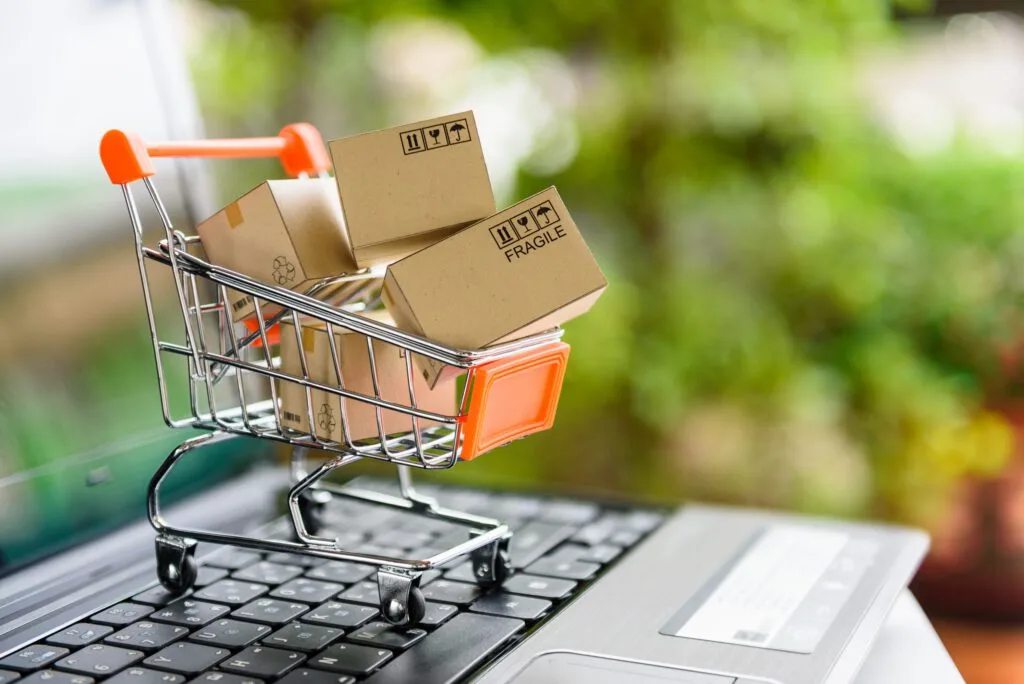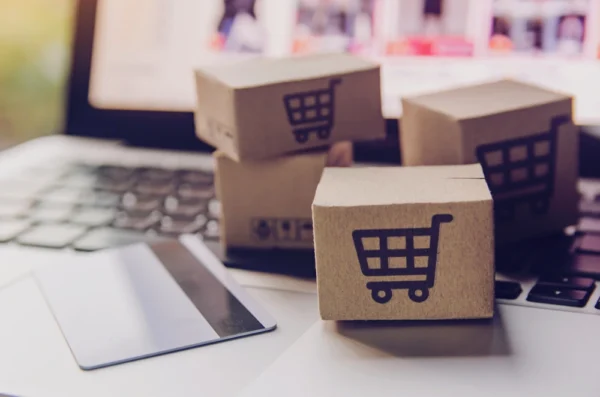One of the most effective ways to grow a sales channel is to boost average order value. This is why there is a big push among many ecommerce brands to upsell. But upselling does not always sit well with customers and can, in fact, drive them away.
Ryan Farley, Co-Founder of LawnStarter, says trying to squeeze all you can out of customers might make for short-term gains, but it will not pay off in the long term. Upselling is acceptable if you are offering products that add value to your customers’ lives . But, when done poorly, upselling can damage a brand.
The good thing is brands do not have to rely on upselling alone to increase average order values (AOVs). Here are four creative ways to encourage customer spending:
1. Offer Free Shipping Incentives
Everybody loves (and indeed expects) free shipping. In fact, if stores do not offer free shipping, they will see their customers go elsewhere. In fact, 65% of online retailers offer some form of free shipping. Because of this, free shipping availability has become a basic consumer expectation. Unsurprisingly, 62% of shoppers say free shipping is the most important factor that influences them to choose a certain online retailer — even if it has strings attached.
Case in point: 30% of shoppers say they increase the size of their online order if it means they would qualify for free shipping. That is why so many stores offer free shipping when customers spend a certain amount or offer something in return (e.g. email signup, refer a friend, leave a review).
“A common practice for waiving delivery fees is establishing an order threshold,” says Maria Haggerty, CEO of Dotcom Distribution. “This allows brands to use free shipping as a marketing tool while incentivizing extra spending.” Consumers expect some form of free shipping and aren’t bothered when they have to hit a certain minimum. This is a subtle way to increase the average order value in a natural, customer-centric way.
“You look at the numbers and you see that your average order is around $30,” calculates Jake Rheude, Marketing Director at Red Stag Fulfillment. “If you want to increase your average order number and sales, it could make sense to offer free shipping for orders over $50. Because you’re shipping all the items together instead of separately, you’ll be able to bring the shipping costs down.”
Deciding what the threshold will be needs to be strategic. Ecommerce managers need to analyse what the current average order value is, what they want them to be and what logistical steps they can take to make free shipping a reality.

2. Simplify Checkout, Especially for Mobile Shopping
Customers spend more if it is easy to do so. Well-designed, low-friction stores improve customer experience and lead to increased spending.
Consider workout brand and online retailer of kettlebells, Kettlebell Kings. This brand customised its checkout process, eliminating half of the fields customers had to review before making their purchases. This led to more impulse purchases and significantly increased average order values. “We want to make it as easy as possible for people to checkout,” says Jay Perkins, Kettlebell Kings’ Co-Founder and Managing Partner. “People literally buy [based on] how they are feeling at that very moment.”
Brands must leave room in the buying journey for impulse buys and ensure the checkout processes are simple enough to not interrupt momentum.
Shopping can come to an immediate halt when the store will not load on consumers’ mobile phones or when they have to fill out too many personal details. The result is an abandoned cart.
A great branded shopping app can reduce those abandoned carts, too. Nike, for example, has honed in on improving user experience by heavily investing in digital tools like its SNKRS app. James Risley at Digital Commerce 360 says Nike’s online sales hit more than $1 billion in its third quarter, largely due to its app. This app, which allows customers to buy limited-edition shoes, generated significant growth for the company. The app’s magic is tapping into people’s desire for limited items, then making it easy for customers to make instant purchases.
Consumers expect simplicity. The easier the customers’ buying journeys are, the more likely customers will reward a brand with increased spending.
3. Offer Your Customers New Helpful Features
Different technological advancements — like visual search, augmented reality and voice shopping — have enabled brands to market and sell their products in new ways. Though all of these technologies carry potential for ecommerce stores to grow in new ways, these advancements must be used appropriately.
Brands that sell home goods or furnishings may benefit from visual search and augmented reality features, for example. Shoppers can use their phones to take pictures of their rooms and see how a sofa will fit with the room.
“Similarly, home improvement retailers Lowe’s Companies, Inc. and Build.com, Inc. say they’ve generated increases in average order values when shoppers view their products in 3-D compared with when shoppers don’t,” Zak Stambor explains at DigitalCommerce360. He said 3-D viewing helped Lowe’s increase average order values by 104%, while Build.com increased the same metric by 64%.
Visual search and augmented reality make sense for larger purchases and items consumers need to visualise, but they would not work as well for everyday purchases. Consumers who buy groceries, cleaning materials and other daily items online do not need to virtually identify their products, but they do want to make their purchases quickly. This is where voice technology comes in.
Jill Kocher Brown at IBM iX notes how Google Express allows Google Home users to buy online from popular retailers like Walmart, Target and more. Other brands can join this program. Though it is still gaining traction, the adoption of this technology is inevitable, Brown believes. ecommerce stores that sell ordinary items need to be prepared for an influx of voice orders to boost their sales.
4. Focus on Earning Customer Loyalty
Loyal customers have higher average order values.
Tina Mulqueen, CEO of Kindred Marketing Company, notes that members of a loyalty program tend to outspend shoppers who are not enrolled in that loyalty program. Further, those loyal customers will have likely given the brand crucial data about themselves. This is a perfect combination for better understanding customers and being able to send them deals and promotions that will add value to their life — and encourage them to spend more.
Rashan Dixon, Senior Business Consultant at Microsoft, notes that loyalty programs are crucial revenue drivers in the beauty market. “80% of Sephora’s and 90% of Ulta’s annual revenues come from members of their loyalty programs,” Dixon writes.
“By offering devoted customers free or discounted items and letting your biggest fans jump the queue, you can retain current brand loyalists while incentivizing other customers to reach the same loyal customer status.” Special promotions and exclusive events bring customers back to you and make them want to spend more.
Customer loyalty is not just about points. It is about truly delighting customers and giving them the experience that makes them proud and excited to spend money. When brands make this a priority, they see a boost in their AOV.
5. Adopt an Endless Aisle Model
As competition increases, brands should be doing everything they can to keep customers on their website or in local stores. Endless aisles are one of the best ways to do just that.
By allowing customers to order out-of-stock items from other store locations or distribution centres, the endless aisle model increases convenience and customer satisfaction. This is good news for online retailers, since 8% of all retail inventory is usually out of stock, and as much as 10% of all retail sales are lost because products are out of stock.
Offering endless aisles helps retailers maximise profit margins, increase revenue, and boost average order value. When brands offer endless aisles or pick-up-in-store options (BOPIS or click and collect), customers stay committed to the brand, rather than turning to a competitor. This is critical to building loyalty. In fact, 17% of customers say they would quickly buy a product from an online competitor if the product is out of stock.
Thinking About Growth Beyond AOV
Average order values are a great metric for understanding how much customers are buying at given times. But AOV is not the final word on a customer’s value. It is merely one important KPI among many. The important thing to consider is how to boost order values while improving — not harming — the customer experience.
Perfecting the domestic customer experience takes a team of experts and multiple vendor relationships. To expand globally takes even more know-how and third-party providers. Simplify your brand’s global growth with ESW. From light-touch checkout and payment integrations to full design-build-run solutions, ESW accelerates reach and revenue for the world’s most-loved brands. Contact us today.





